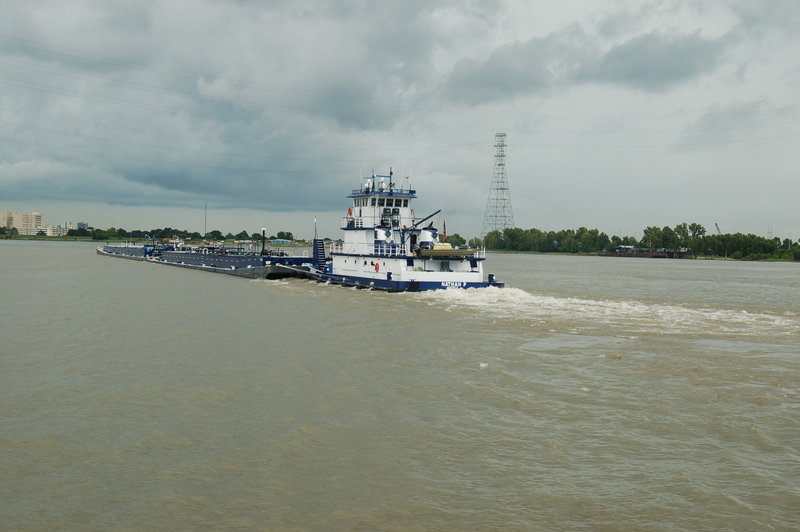The U.S. economy is growing, but too much equipment and too many infrastructure problems are stunting growth in the barge business. Owners built too many barges over the past few years that led to an oversupply that has driven down rates. In addition, some cargo that is flowing on the system has been held up because of recent lock and dam problems that have backed up traffic and thrown delivery schedules into chaos.
“When we have interruptions on the water, it sets off a number of bells around the world. The world is paying attention to what we do every day,” Ken Eriksen, senior vice president, Informa Economics IEG, said at the Waterways Council Inc.'s 14th Annual Waterways Symposium in Mobile, Ala., today. Customers begin to ask themselves, “do we need to go someplace else?”

Ken Eriksen addresses attendees at 14th Annual Waterways Symposium. Ken Hocke photo
The economy is strengthening, he said, and the proposed federal tax package could strengthen it even more.
There may be some additional liquid cargoes for barge operators but the question is for how long. And there might even be a small growth in barged coal. However, the problem is the overhang in equipment, Eriksen said. “The age of the fleet is just so darn young. It’ll be another three years before we start chewing up that fleet.”
Another concern is whether the U.S. pulls out of the North American Free Trade Agreement (NAFTA), where negotiations between the U.S., Mexico and Canada are scheduled to resume later this month. Roger Bernard, a policy analyst with Informa, said negotiations would almost certainly continue into 2018. Further delays could come from midterm elections in the U.S. and the presidential election in Mexico.
If the U.S. drops out of NAFTA it could affect the economy and stock market and result in the loss of some 256,000 jobs over the next three to five years, Bernard said. “There’s a lot of trade nervousness,” he said. “A contingency plan is in the works but I haven’t seen it.”
And Bernard encouraged inland waterways interests to continue pushing for infrastructure reform and not to get lost in the crowd. “You just have to see how the other legislative trains run.”
As for those delays along the system, it’s the same old song about crumbling structures and not enough money to stay ahead of the problems. A recent study focusing on just four heartland lock and dam locations found each provides more than $1 billion in annual transportation savings. But these locks and dams along the system routinely fail, causing major practical and economic problems. “We’re not keeping up with the [maintenance] of the infrastructure we have,” said David Dale, director of programs, Great Lakes and Ohio rivers division, Corps of Engineers.
A major choke point is Olmsted, Ill., where Lock and Dams 52 and 53 were built in the late 1920s and are currently having problems. A new lock and dam system is under construction at Olmsted, a huge project that carries a huge price tag. It should be open by mid-June 2018, said Dale. “The design of the new system is a lot like the old 52 and 53 design. The designs are actually close to one another,” he said, but with new engineering and technology.




